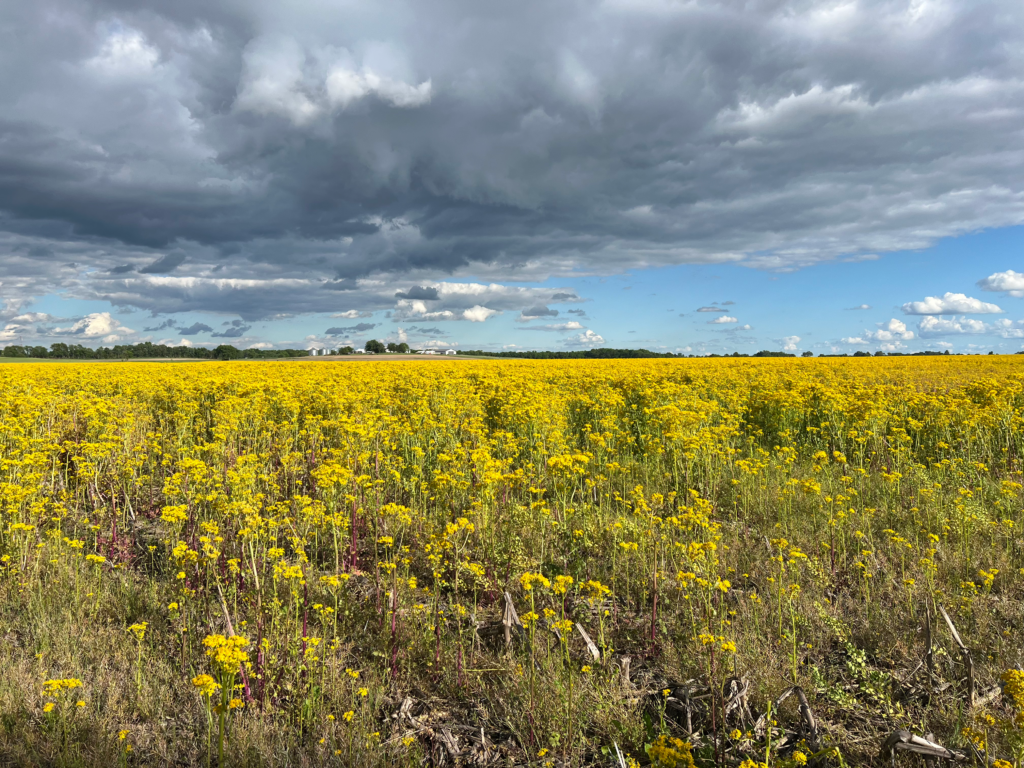Late Planting: No matter how late you plant your soybeans, don’t “mud them in.”
Crop Choice: If you still have both corn and soybeans to plant, it is now time to focus on corn. Soybeans can adjust development due to late planting because they are photoperiod sensitive. Soybeans are more apt to yield under stress when compared to corn.
Yes, we usually obtain our greatest yields from soybeans planted from mid-April until early May and yes, after mid-May, soybean yield POTENTIAL can decline. on average, each day by +/- .5 bushels per acre. Planting date is not the only management decision that can lead to greater yield. Other management factors and Mother Nature determine yield potential during the rest of the growing season.
Seeding Rate: Plant soybeans at a higher seeding rate when you reach June. As we approach Mid-May, if you are not already, start planting soybeans at 140,000 seeds/A. Some may say to start increasing your planting population by 3 to 5 percent (2,500 to 5,000) by June because of plant stature. Some soybean varieties could branch more, which could compensate if less plants are planted. If soybeans are still not planted by June, it is recommended to start to increase seeding rates by 10 percent. Increasing soybean populations will not necessarily always guarantee a higher yield, but they can help to:
- Attain a greater number of nodes for trifoliate leaves to capture sunlight during a later growing season characterized by shorter daylight hours. There could be less nodes produced on the main stem in a later growing season with less days until flower which could decrease yield potential. More sunlight capture can allow for more branching and pods which could lead to increased yield potential.
- Possibly give the soybeans some height as well as produce pods higher off the ground which can reduce harvest loss and lower branch breakage.
Row Spacing: Not everyone has this option, but, if possible, decrease your row spacing from 30” to 15” to help to give you on average a 5 percent to 10 percent yield advantage because quicker canopy or row closure can lead to increased sunlight capture, shading of weeds, and reduced soil evaporation that can lead to greater yield potential.
Soybean Maturity: We normally don’t need to change or go down in soybean maturity until mid-June in the Northern or Central parts of the Midwest. When we do go down in maturity, it usually is only by a half maturity. An example would be switching from a 3.5 soybean variety to 3.0 soybean variety. There is only a 3-to-5-day difference between a maturity group spread of .5 to 1.0. If the same variety was planted 40 to 60 days apart, the latter planted would reach maturity 5 to 10 days later depending on light, heat, moisture, and nutrients. The rule of thumb would be to make sure you are planting a maturity that will mature 90 days before the average date for the first fall frost. A full maturity soybean maturity is often recommended in the south for later planted, double crop soybeans.
Weeds, Pest and Disease: Later planting and lower commodity prices will lead to questions of how much management needs to be done to receive a return on investment.
- Seed treatment is usually not a necessity with later planting, but still may be needed if Phytophthora root rot is a threat. Refer to this article I wrote, “You Think Your Soy Has the Blight: Now What?”
- Fields that are not planted yet may be greening up now with summer annuals like waterhemp because our fall or spring burndown did not happen, or the spring burndown or tillage occurred earlier this spring. Focus on these new weeds coming because they could haunt you the rest of the season. Another herbicide burndown with residuals may needed depending on weed, label, and plant back restrictions before tillage or planting. Late season scouting for weeds will be critical. Be careful and read labels when making later post or rescue applications to avoid the risk of carry-over into the next crop.
- Disease susceptibility can vary depending on soybean variety but increasing soybean population and decreasing row spacing can create a more favorable environment in certain weather scenarios for white mold, charcoal rot, stem cankers, and possibly some leaf diseases.
- You may avoid some of the soybean insect pests by planting later but be on the watch for soybean aphid and later season insects such as stink bug and grasshopper that you might not be controlled with an insecticide application that may take place at the R3 growth stage.

Photo – Porter, Stephanie


 and then
and then